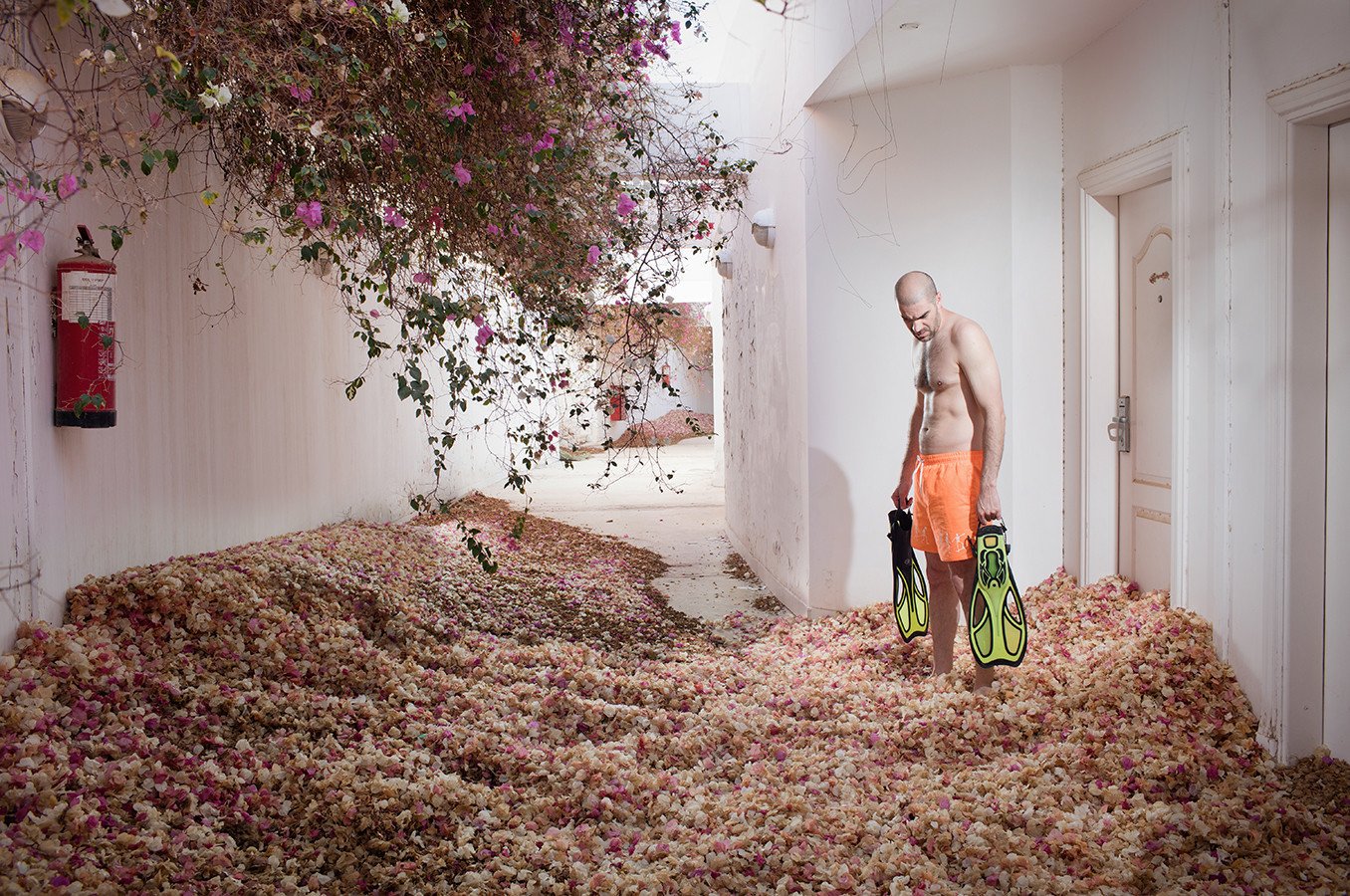Prozac: Self-Portrait in Hotel Rauf
On August 19, 2020, Wellcome Photography Prize 2020 has announced Arseniy Neskhodimov with his ‘Prozac’ series as the winner of this competition. Wellcome Photography Prize is one of the UK’s leading photography prizes that is run by the Wellcome Trust, a charity foundation. For this year, this prize has a special theme, “Mental Health”, as this issue is difficult to depict and often leads to misunderstanding and stigma.
In the Prozac series, Arseniy Neskhodimov invites the audience to look more closely into the interiority of the subject who lived with depression. Neskhodimov uses a brand name of drug Prozac that is usually prescribed to treat depression.
Neskhodimov is a photographer, born in Samarkand, Uzbekistan, and lives in Moscow. Neskhodimov has also been prone to depression since he was 20 years old.
Prozac is a self-portrait story. One of the photographs depicts him at an abandoned resort in Sharm El Sheik, Egypt. The hotel was full of fallen bush flowers and he posed as a tourist who wants to dive. This photograph is a powerful portrayal of life with depression that is hard to explain but very intense to be felt.
Prozac: Self-Portrait with Christmas Trees
Another photograph is this series that portrays he buried under a pile of Christmas trees. After briefly admired at the end of last year, the Christmas trees were thrown away at the beginning of the new year. It represents the mixed feeling of subjects that his life will be wasted.
Prozac: Self-Portrait as a Beach Goer
Prozac series also talks about how to cope with the depression. Self-Portrait as a Beach Goer presents a picture of him swimming in the sea at Sharm El Sheikh. He actually was afraid of deep water. He tried to cope with his fear although the darkness of the deep sea remains surrounding him.
Many people imagine that depression is like ordinary unhappiness. In fact, it isn’t. The efforts that usually do to cheer ourselves up can’t be used as treatments of depression.
Prozac photos series challenges the social stigma of the people who live with depression. It also provokes the audience to think more openly about depression through the portrayal of the interiority of the subject and its stigma.


